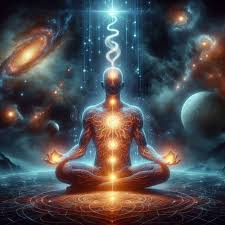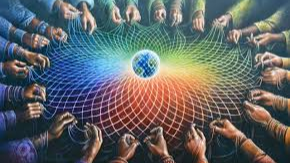
The housing market is not friendly to would-be buyers without help from mum and dad. So many are turning to the sharemarket for help.
Sophie MacPherson, 25, has been investing since she picked up a copy of The Barefoot Investor as a teenager and thought she ought to “dip a toe in”.
After eight years, she plans to use some of it for a home deposit.
MacPherson, who is a policy officer in Sydney, is among the growing number of young people turning to the sharemarket to turbocharge their savings in the hope they will make enough for a house deposit.
The combination of (until recently) lacklustre wage growth, higher rents and soaring home values make keeping up with property price growth a Sisyphean task for those trying to break into the market.
MacPherson was investing monthly into exchange-traded funds in 2022. Although she has stepped it back recently to chase high interest in her savings account, she still has about 50 per cent of her money in shares.
“Ideally, I wouldn’t liquidate my entire portfolio to buy a property, but I would liquidate some to help form a deposit,” MacPherson says, admitting it’s tricky to manage her HECS debt while breaking into Sydney’s “crazy” property market. So, she thinks it’s likely she’ll have to tap her investments.
“If the right property came up towards the end of this year or next year, we would definitely be open to putting an offer on something like that.”
Here is a guide to investing if you want to buy a property within one year, a couple of years or in a decade’s time.
Within a year
This timeframe is too short for investing in financial markets, says Melody Edwards, a financial adviser at Evalesco.
“The chance of losing capital over that amount of time is considerable,” she says. “So unless you’re flexible on your purchase date, to the extent you can ride through something happening, you really want to keep it more secure savings.”
HSBC head of investments Donahue D’Souza agrees that the amount of risk you can take on is tied closely to your timeframe.
“An investment horizon of up to two years is typically seen as short term, medium term is three to five and long term is greater than five years.”
A one-year timeframe is very short for the sharemarket, so if you’re planning to buy soon, cash is your friend, D’Souza says.
But that doesn’t mean you can’t make your money work hard.
Canstar analysis finds a person with $100,000 who put it into a high-interest saving account earning 5 per cent, and deposited $1000 a month, would earn $5018 in interest in 2025.
That means the deposit will grow to $117,018 over the 12 months, even accounting for forecast interest rate cuts in May, July, August and November (as forecast by Westpac).
Someone with a $150,000 savings balance would reach $169,401 over the same period if they contributed the same $1000 a month, while someone with $200,000 would have $221,784.
The First Home Super Saver Scheme, in which borrowers can withdraw up to $50,000 of voluntary superannuation contributions, is another option and offers some tax benefits, as savings within super are taxed at only 15 per cent.
In two to three years
If you’re thinking of buying within two years, you’d still be largely in high-interest savings accounts, says Edwards.
But once you reach three years, you may consider adding a small portion of investments, such as diversified or exchange-traded funds. “You’d probably still be 75 per cent to 80 per cent in cash,” she adds.
D’Souza agrees liquid and defensive assets – those that are less likely to lose value – should still be front-of-mind in this scenario.
“Typically, these types of investments would include high interest and bonus interest savings accounts, term deposits and government bonds, if prepared to collect coupon payments and hold to maturity,” he says.
In three to five years
You have a little more room to play here, but still not a lot.
“You’re probably opening up a bit more in terms of adding growth,” says Edwards. “With three to five years, you would start increasing the growth allocation towards 50 per cent, but you’d try to diversify it as much as possible.”
That is, you’re not putting it all into just Australian banking shares, or US tech shares.
“Especially if the amounts are smaller, in terms of the regular savings that you’re putting into your investments, the easiest way to diversify would be to track an index and that’s the most cost-effective as well. Something like [an ETF tracking the ASX or the S&P500] is something we’d look at, or a diversified growth ETF that might mix the different indices as well.”
For example, ETF providers such as Vanguard offer products based on risk tolerance. Vanguard’s diversified conservative index ETF is described as medium risk, with a three year-plus timeframe.
Its diversified balanced ETF is also medium risk, but has a timeframe of five years-plus.
Others, such as its diversified growth ETF are considered high to very-high risk, and so it recommends holding them for at least seven years.
In 10 years
It’s not uncommon for Edwards to meet clients who want to buy further than five years out, particularly if they want a house rather than a unit, or they have quite a specific property goal.
For that saver, the first step is building up a three- to six-month buffer of living expenses. This is because these savers will invest much more in growth assets, such as shares, which they don’t want to draw down upon for a long time.
“Once that buffer is built, it’s about deploying 70 to 80 per cent of their wealth into growth assets. The rest will be in cash or fixed income,” says Edwards.
Those growth investments will still be in broad ETFs or index funds.
You have a bit more time now, so you can afford to take more risk as you have longer for the market to recover, agrees D’Souza.
“This portfolio is mainly growth-oriented with increased exposure to equities, global equities, and thematic plays.
“Given the higher risk, investors will likely use active ETFs and leverage the expertise of a financial adviser or fund manager to actively manage and adjust the portfolio exposures to increase returns and actively manage the risk,” he says.
If you’ve got a 10-year timeframe, you may consider adding an element of leverage to your investment strategy.
ETF provider Betashares launched a suite of products this year called Wealth Builder ETFs. These products track an index and are leveraged at a range of 30 to 40 per cent, meaning that for every $100 invested, the investor is granted $143 to $167 worth of exposure to the related index.
Betashares says $10,000 invested in the ASX200 from September 2010 to March 2024 would have grown to $30,400, but if that same sum was leveraged at a loan-to-value ratio of 30 to 40 per cent, it would have grown to $37,400.
But, notes Edwards, any time you introduce gearing, you increase risk. “That would be something where you only put in as much as you are comfortable to lose, over that short-term period,” she says.
How do I split it?
It’s not a simple matter of transferring, say, half of your savings into ETFs in one fell swoop, says Edwards.
Instead, you need to figure out what you’re trying to achieve for your deposit and then work backwards.
She gives this example: “Let’s say the starting point is $50,000 and the target is $100,000 deposit and the timeframe is five years – to save the $50,000 you would need to put aside about $192 per week into a savings account.
“A way to potentially grow your savings would be to invest a portion of these funds, keeping sufficient funds as an emergency buffer. We typically target three to six months.
“If your annual living expenses are $60,000, keep $30,000 as your buffer and start your investment with $20,000 and then with your regular savings, direct 50 per cent to savings and 50 per cent into investments.”
If you’re starting with $100,000, and plan to invest a larger amount, say $70,000, she says it’s worth considering dollar cost averaging over four months (so $17,500 in each instalment) to minimise market timing risk.
“We would usually look at dollar cost averaging between three and six months depending on the amount invested and your comfort level. Usually, the more to invest, but less familiar with investments would take over a longer period.”
Although she’s used a five-year timeframe, she says this buyer would have to be comfortable extending their purchase date if markets were to drop and fail to recover within that span.
“The big question [for people trying to save a deposit is] what is the timeframe and what are you looking at to buy?” Edwards says.
“The answers to those questions will help guide us around what’s reasonable, and what might require a little bit more work.”
by Lucy Dean in AFR 03/01/2025









